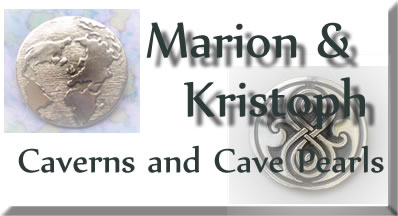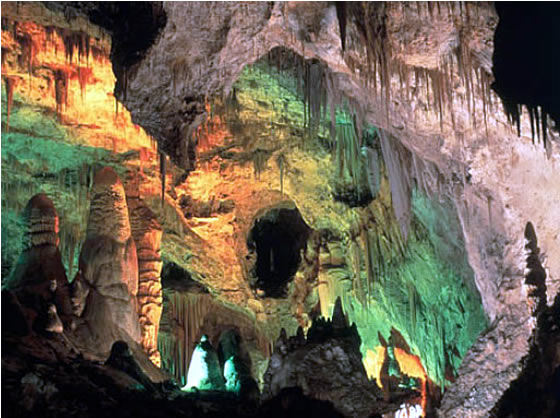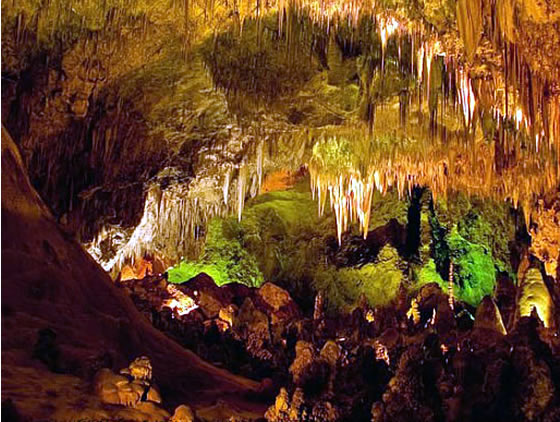

It was the beginning of Octima, the vernal month associated with strong, biting winds and rain on the southern plains of Gallifrey. The group of youngsters gathered in the hall of Mount Lœng House looked at the grey, blustery sight outside the windows without enthusiasm.
They were a mixed group. Some were Caretakers from the estate school where Marion taught. Others were young aristocrats. Rodan was in the middle as always, Caretaker-born but with an aristocratic education and upbringing.
All were dressed for an outing, in sturdy clothes and warm coats, each carrying a shoulder bag with their picnic lunch and a supply of sweets for the journey.
But what sort of journey were they going to enjoy in this weather, and where could they be going that wasn’t utterly miserable?
Breissal Arcalian had a completely different question to ask Rodan.
“Is your foster father really taking us on this field trip? The President, himself?”
“Yes,” she answered. “He said he was looking forward to being among intelligent company for a change.”
Breissal was puzzled. Surely the Lord High President was usually among the most intelligent men and women on the planet when he was in Council in the Panopticon.
Breissal had not been introduced to the concept of sarcasm.
While he was still puzzling over it, Rodan’s foster-father, the man every other child knew as the Lord High President, came into the hallway. The youngsters were surprised to see that he was dressed much as a Caretaker would dress – in sturdy fabrics including trousers made of a tough blue material and a sweater of wool. He was wearing leather boots and was carrying a backpack.
As strangely as he was clothed, he WAS the Lord High President. All of the children bowed to him.
“Not today,” he told them. “We’re visiting a part of Earth where they don’t bow to their President. At best they stand when he enters the room, and as you are already standing, we’ll just stick to ordinary politeness.”
“We’re going to Earth?” one of the young aristocrats asked.
“Where’s that?” asked another.
Breissal, who had gone on a few trips with Rodan began to explain, but Kristoph just ushered them all into his TARDIS which had been sitting there in the hallway disguised as a fine mahogany cabinet all along. The Caretaker children had been on trips in the TARDIS many times. Marion had persuaded her husband to take them on educational trips offworld. For most of the young Newblood and Oldbloods it was their first time. Few had even gone as far as Karn to see the wildlife there. It was a peculiar paradox that many Time Lords, with the freedom of all time and space afforded to them, rarely travelled beyond their own world. Their children were even less likely to see another sky above their heads.
Not that another sky was part of the plan for today – at least not for very long.
A very short time later, given that they had travelled more than two hundred and fifty thousand light years, a distance that humanoid species usually took many months to cover by hyperspace, they emerged into a sunlit wilderness of trees, grass and rocky outcrops with a blue sky arcing overhead.
“Is this what Earth looks like?” asked many of the youngsters.
“Not where I usually go,” Rodan answered. “It rains more, there.”
“This is New Mexico in the United States of America,” Kristoph told the children. “Earth has many separate countries within it. You may find out about the different forms of government and how they sometimes clash with disturbing results any time you like. There are modules to be found in any of the libraries of Gallifrey. But today we’re just going to do some spelunking.”
The Gallifreyan word for exploring caves was even stranger sounding than the English one, and the children all laughed, nervously at first, unsure if it was a joke or not, then more confidently.
“Form pairs and follow me,” he said. “You may talk among yourselves. Any good political jokes will be accepted gratefully.”
None of the youngsters had any political jokes, as he fully expected. Before they could worry about that the zig-zag path they were walking along brought them out of the sun and away from the bright blue sky, into a huge cave where their chattering voices echoed in amusing ways.
Part way down the slope they reached a kiosk where they were each handed wide flat discs like over-sized dinner plates. Kristoph smiled at their confusion and explained that the Carlsbad Caverns had existed for countless millennia before being explored by humans. They had been a tourist attraction for some three hundred years by this, the twenty-fourth century, and the personal hover-platform using negative gravity was the newest and most comfortable way to see everything without becoming worn out from walking.
Everyone got the hang of floating a few inches above the smooth path quickly. It really was better than walking as they descended several hundred feet into the ground, admiring amazing rock formations such as the ‘Witches Finger’.
“It can’t be a REAL witches’ finger,” the logically educated young Gallifreyans insisted. Perhaps some of them were glad to tell each other that it was a stalagmite, built up by calcite precipitation over thousands of years. The reddish-yellow pillar rising up from the rock floor was just a bit too much like a gnarly finger if they let go of logic and allowed imagination to have its sway.
“Humans like to be creative in naming things like this,” Kristoph told the youngsters. That satisfied them until they came to a pool of still water that reflected the yellow electrical lights that were strung throughout the public parts of the caverns. A thick pillar of white calcite with a knobbly part that could look like a bearded face to the imaginative rose out of the water. A darker coloured outcrop from the wall almost looked like petrified water spilling into the pool. The formation was known as The Devil’s Spring.
“Many Humans have a concept of a ‘devil’ who takes the souls of the unworthy,” Kristoph explained. “We have never had such concepts on Gallifrey, so it may be difficult for you to understand.”
It was. Kristoph decided that comparative religions could wait until they were all a lot older. They descended lower and emerge into a vast cavern that was lit with strong white light to emphasise the natural formations within it. The high ceiling was a mass of small, sharp stalactite like thousands of daggers pointing downwards while a series of huge, wide stalagmites rose up as much as fifty feet. They were a distinctive yellow-white colour and to the imaginative could have looked a little like humanoid forms even though there were no discernible limbs and the ‘heads’ were unfinished.
“The Hall of Giants,” Kristoph explained. Rodan nodded in understanding and told her friends about the trolls in the Hobbit who were so busy arguing about how to eat their captives that the sun came up and turned them to stone. These Giants were named by people with the same fantastic visions.
The Gallifreyan children did their best to see giants, but mostly they saw deposits of calcite that had taken eons of time to form.
“It’s all right,” Kristoph told them. “You can see what you want to see.”
And that was true of many of the formations they saw on their tour of the cave system. What humans had named ‘the spirit room’ for the crowd of free standing white stalagmites resembling ‘angels’ was admired for its beauty and the purity of the deposits that had formed the structures, but angels had no part in Gallifreyan theology, either.
Not that they weren’t having a good time. Their eyes were bright with joy at each new and fascinating example of gigantic speleothem they saw. The ‘Queen’s Draperies’, a magnificent wall of limestone deposits that resembled folds of white lace fabric hanging from the ceiling held their attention as they imagined the vast length of time it took for water to trickle down through the cavern, depositing tiny amounts of dissolved minerals until they became something nearly as high as the domed ceiling of the Panopticon and as wide even at the base as the great Council Table. That nature all by itself had created such wonders was almost too big for their minds to grasp.
“What was it like when the caverns were new?” asked one of the children.
“Quite inhospitable,” Kristoph replied. “Smaller caverns and cave systems are usually formed by the action of water – underground river systems, rainwater seeping through from above. But a system on this scale is much more dramatic.”
He paused and looked around at the youngsters and realised he had their complete attention. They wanted to hear what he had to say. What a change from the Panopticon where everyone was too busy trying to make their own voice heard to listen to anyone else. He was enjoying the undivided attention to once.
“In what humans labelled the Cenezoic era, hydrogen sulphide seeped upwards from the petroleum reserves that still lie deep underground. The hydrogen sulphide mixed with oxygen from the water that had seeped down from an inland sea that used to cover most of New Mexico. That formed sulphuric acid, a highly caustic chemical that dissolved the rocks and created the caverns. If you were, somehow, transported in time into the caverns when they were being created, you would not live very long.”
These children were barely nine years old, of course, but they were Gallifreyan children. They had no trouble understanding all those chemical names and could probably have given him the formulae for them if he had asked for it. This was a day out, not a science lesson so he didn’t test them. It was enough that they were listening.
“If we went by TARDIS it would be all right,” suggested Breissal.
“Yes, but we’re not going to do that,” Kristoph insisted. “Imagine what it would do to the varnish on the outside of the capsule?”
The children laughed. Of course, the TARDIS’s outer appearance was a clever disguise. It would be completely unharmed by exposure to a Cenezoic sulphuric acid atmosphere. He could have done that, and the children would certainly have learnt a great deal from such an experience, but there was still plenty to discover in this era.
He compromised by holding out his hands and creating a holographic image in the air above them, product of his imagination, in which he demonstrated the poisonous atmosphere of the proto-cavern as it was being created.
“I think we probably should not go there,” Breissal decided when the demonstration was over.
“I think you’re right,” Kristoph agreed. “Shall we find a picnic place and enjoy our lunch, now?”
They had their lunch in the cavern called ‘The Rookery’ where tables and benches were provided for picnickers just as if it was in a park above ground. The ceiling was a hanging forest of stalactites while the floor was littered with examples of a much smaller kind of speleothem – cave pearls. When their lunch was over, the children investigated the clusters of pearls all around them. They were mostly the size of marbles and almost all were perfectly round.
“They are made in a very similar way to organic pearls,” Kristoph explained. “A concretion of calcium salts form concentric layers around a nucleus. Exposure to moving water polishes the surface of the cave pearls, making them glossy, but unlike organic pearls they lose their lustre when exposed to air.”
That was the one disappointing thing about the cave pearls. They were rough, pockmarked with tiny holes where oxygen had dissolved the calcite. Even so, the children were attracted by them.
“You mustn’t be tempted to take any of them,” Kristoph told them. “If everybody took souvenirs from the caverns they would soon be stripped bare. Even sulphuric acid would be less harmful in the long run.”
The children were disappointed, but they didn’t dare disobey. They touched the cave pearls and marvelled at the forces of nature that created them, but when they moved on once more to visit the Lake of the Clouds and other wonders still to be seen, none of them brought a pearl with them.
Which was why, when they came up to the section of the entrance gallery which had been turned into a café and souvenir shop, Kristoph bought them all special remembrances of their visit to the Carlsbad Caverns of New Mexico. The youngsters smiled with joy as they held onto their own silver keyrings with fobs made of transparent plastic barrels containing amber coloured liquid in which a single cave pearl glistened beautifully. Each of the keyrings had been engraved with the name of the recipient and the date of their visit to the Caverns. None of the Gallifreyan children, all of them future Time Lord candidates, puzzled over that too much. They knew it was possible to use time travel to arrange such things retrospectively. They were just a little surprised that a man as busy as the Lord High President himself had time to pay attention to such details just to make their day trip all the more special.
“Earth is my second favourite planet after Gallifrey,” Kristoph admitted as the children walked with him back to the TARDIS, under that unfamiliar blue sky. “Now you all have a tiny bit of Earth to bring home with you. Just don’t show them to Lord Ravenswode. He might get ideas about unGallifreyan souvenirs.”

 |
 |
 |